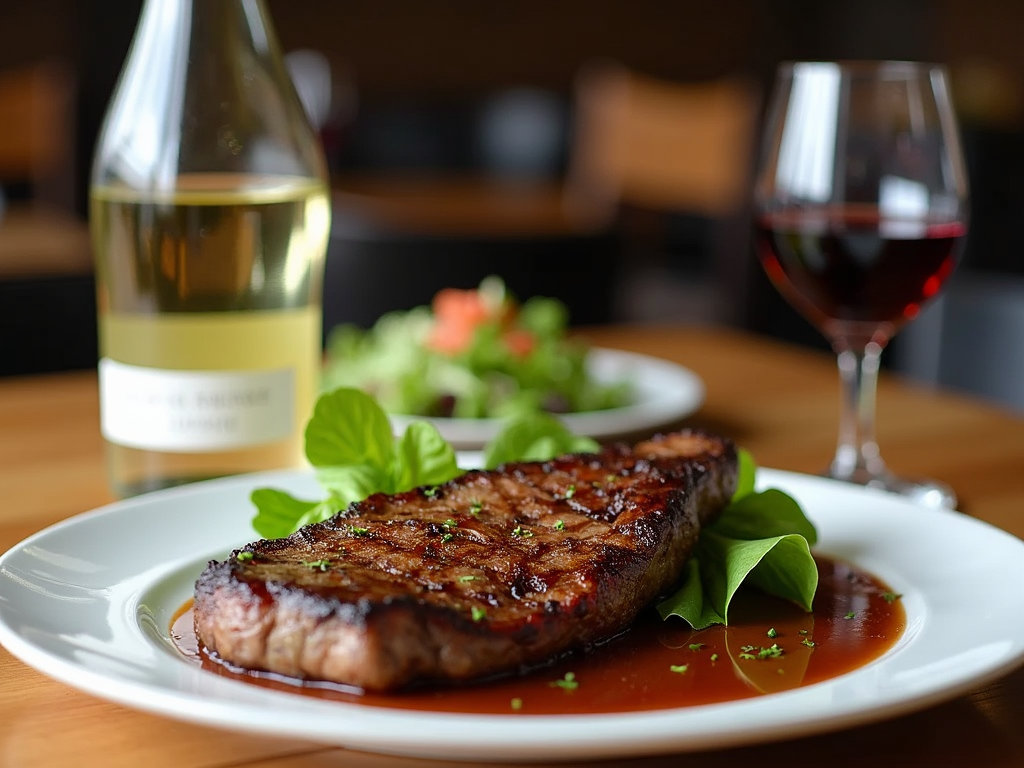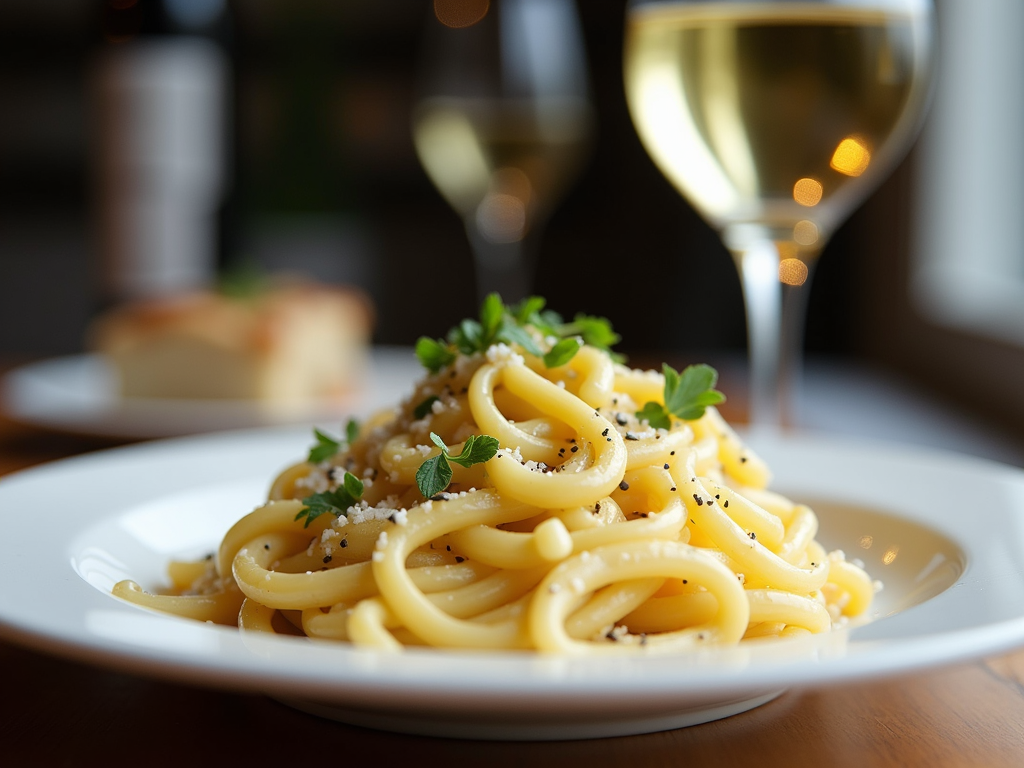Wine Pairing 101: Essential Tips for Beginners
Wine pairing can seem daunting, but it doesn't have to be. This guide breaks down the essentials, offering tips and insights to help beginners confidently pair wine with food.
Wine pairing is the art of matching wine with food to enhance the dining experience. It's about finding flavors that complement each other, creating a harmonious balance on your palate. For beginners, the key is to start simple and experiment with different combinations.
I remember my first attempt at wine pairing. I chose a bold red wine with a delicate fish dish, and the result was overwhelming. The wine overpowered the food, and I realized I had much to learn. That experience taught me the importance of understanding the basic principles of wine pairing.
One fundamental principle is to match the weight of the wine with the weight of the food. Light wines pair well with light dishes, while heavier wines complement richer, more robust meals. For example, a crisp white wine like Sauvignon Blanc goes beautifully with a light salad or seafood, whereas a full-bodied red like Cabernet Sauvignon is better suited for hearty steaks or stews.

Another key aspect is to consider the flavors and aromas of both the wine and the food. Wines can be fruity, earthy, spicy, or floral, and these characteristics can either complement or contrast with the flavors in your dish. For instance, a wine with citrus notes can enhance a dish with lemon or lime, while a wine with herbal undertones can pair well with dishes featuring herbs like rosemary or thyme.
Here's a quick reference table for common flavor pairings:
| Wine Characteristic | Food Pairing |
|---|---|
| Fruity | Fruit-based desserts, cheese |
| Earthy | Mushrooms, truffles, root vegetables |
| Spicy | Spicy dishes, grilled meats |
| Floral | Light salads, seafood |
This table can help beginners start thinking about how different wine characteristics can match with various foods.
Acidity is another crucial factor in wine pairing. Wines with high acidity can cut through rich, fatty foods, creating a balanced taste. For example, a high-acidity wine like Riesling pairs well with creamy pasta dishes or fatty meats like duck. On the other hand, low-acidity wines might feel flat when paired with such dishes.

Sweetness in wine can be a great match for spicy or salty foods. The sweetness can balance out the heat or saltiness, creating a pleasant contrast. For instance, a slightly sweet wine like Moscato can pair wonderfully with spicy Asian cuisine or salty cheeses.
Take Beringer, for example. Their Moscato is known for its slight sweetness and fruity notes, making it an excellent choice for pairing with spicy dishes or as a dessert wine. Reading Beringer wine reviews can give you insights into how others have enjoyed this wine with different foods.
Beringer is one of the oldest and most respected wine brands in the United States, with a history dating back to 1876. They offer a wide range of wines, from crisp whites to robust reds, making them a great starting point for beginners looking to explore different wine styles.
If you're new to wine pairing, start with these simple tips:
-
Begin with versatile wines: Wines like Pinot Noir or Chardonnay are known for their versatility and can pair with a variety of dishes.
-
Consider the sauce: Often, the sauce in a dish is more important than the protein when choosing a wine. For example, a creamy sauce might call for a different wine than a tomato-based one.
-
Experiment with contrasts: Sometimes, contrasting flavors can create an exciting pairing. For instance, a sweet wine with a salty cheese can be delightful.
-
Trust your palate: Ultimately, the best pairing is one that you enjoy. Don't be afraid to try different combinations and see what works for you.
One of my favorite discoveries was pairing a dry Rosé with grilled vegetables. The wine's crispness and subtle fruitiness complemented the smoky, charred flavors of the veggies perfectly. It was a simple pairing, but it opened my eyes to the possibilities beyond traditional matches.
Serving wine at the right temperature is crucial for optimal enjoyment. Generally, white wines should be served chilled (around 45-50°F), while red wines are best at slightly cooler than room temperature (around 60-65°F). Serving wine too warm or too cold can mute its flavors and affect the pairing.

Common mistakes include:
-
Overcomplicating things: Start simple and build your knowledge gradually.
-
Ignoring personal preference: Don't feel pressured to follow strict rules if you don't enjoy the pairing.
-
Not considering the occasion: The setting and company can influence your wine choice. A casual dinner with friends might call for a different wine than a formal event.
For those eager to learn more, consider exploring wine pairing apps or attending local wine tasting events. These can provide hands-on experience and help you develop your palate.
In summary, wine pairing is an art that anyone can learn with a bit of practice and experimentation. By understanding the basic principles—like matching weights, considering flavors, and paying attention to acidity and sweetness—you can start creating harmonious pairings that elevate your dining experience.
When it comes to desserts, wine pairing can be particularly delightful. Sweet wines like Port or Sauternes are classic choices for chocolate or fruit-based desserts. The sweetness of the wine should ideally match or slightly exceed that of the dessert to avoid the wine tasting bitter.

Cheese and wine are a match made in heaven. The key is to pair the intensity of the cheese with the wine. For example, a creamy Brie goes well with a light, fruity red like Beaujolais, while a strong blue cheese pairs beautifully with a sweet dessert wine like Sauternes.

Exploring regional pairings can also be rewarding. For instance, Italian wines like Chianti are often paired with tomato-based pasta dishes, while Spanish Tempranillo complements tapas and cured meats. Learning about these traditional pairings can provide a deeper appreciation of both the wine and the cuisine.
Tannins are compounds found in wine that can create a drying sensation in the mouth. They are more prominent in red wines and can influence pairing choices. High-tannin wines like Cabernet Sauvignon pair well with fatty foods, as the fat can soften the tannins. Conversely, pairing high-tannin wines with lean proteins might make the wine taste overly astringent.
Here's a quick guide to tannin levels in common wines:
-
Low Tannin: Pinot Noir, Gamay
-
Medium Tannin: Merlot, Sangiovese
-
High Tannin: Cabernet Sauvignon, Syrah
Understanding tannin levels can help you choose the right wine for your meal.
For vegetarians and vegans, wine pairing can be just as exciting. Look for wines that complement the earthy, umami flavors often found in plant-based dishes. For example, a mushroom risotto pairs well with a Pinot Noir, while a spicy tofu stir-fry can be enhanced by a slightly sweet Gewürztraminer.